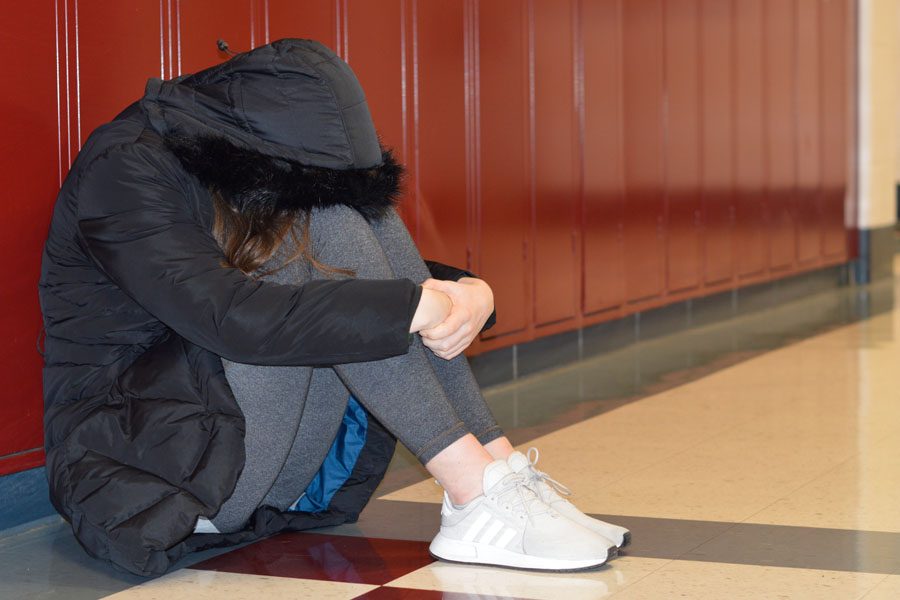With Winter Comes Seasonal Depression
Seasonal Affective Disorder (SAD) is a type of depression that comes and goes with the change seasons, according to the National Institute of Mental Health.
February 15, 2019
As the temperatures drop, many students start to feel the effects of seasonal affective disorder (SAD).
SAD is a common disorder among Americans with over 3 million US cases a year in which a person gets depressive symptoms during certain times of the year, typically starting in the fall and lasting through winter. SAD is most prevalent in areas far from the equator or places with persistent rain, snow or little sunlight.
Symptoms of SAD are similar to that of depression and include having low energy, losing interest in activities once enjoyed, hypersomnia, changes in weight or appetite, feeling sluggish or agitated and social withdrawal.
“In the summer I’m usually more upbeat and overall happier and have more energy. My energy and happiness then decrease going into winter, and increase in the spring,” junior Dylan Kim said.
Young adults and teens are at the highest risk for SAD. According to the National Institute of Mental Health (NIMH), students spending their days in classrooms and people working in environments with less exposure to sunlight face greater likelihoods of developing symptoms of SAD.
“I personally come into contact with a handful of students each year who have seasonal affective disorder, but most likely there are many more students at school who are dealing with this,” MCPS school psychologist Julie Shields said.
Many cases of SAD can generally be improved with phototherapy, which is when a person is exposed to bright artificial sunlight within the first hour of waking up. Other treatments include talk therapy, exposure to positive social situations and mind-body connection, such as yoga or routine exercise.
“If students have friends who are dealing with SAD, they should listen to their friend, let them know they care, and encourage them to talk,” Shields said.
The American Psychological Association (APA) and NIMH suggest that people dealing with SAD should get more exposure to sunlight, eat healthy, exercise regularly and spend time with family or friends.
“I’ve had some ups and downs of mood swings and irritability, especially in the winter,” junior Tomer Atzili said. “I usually spend time with friends or play video games to relieve symptoms or distract myself.”
Due to a lack of awareness of SAD, students sometimes do not have solutions or resources to help treat symptoms. Although SAD is common among students, it is often dismissed as winter blues or an emotional phase.
Students have suggested alternative ideas on how to raise awareness of SAD that would be engaging for students who may be at risk of suffering from the disorder.
“A classroom presentation like we had for the domestic abuse and suicide presentations would be helpful to let students know that there are resources to help them if they need it,” Kim said.
Students should keep in mind that help and resources can be found in the counseling department and online. If a student is dealing with SAD, MCPS encourages them to reach out to a friend, adult or hotline.




